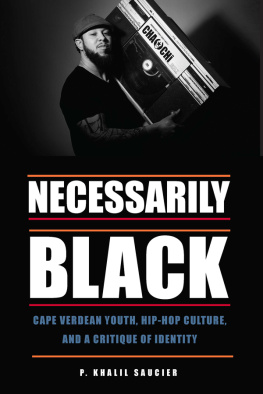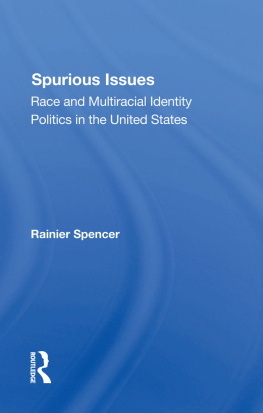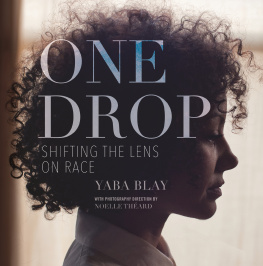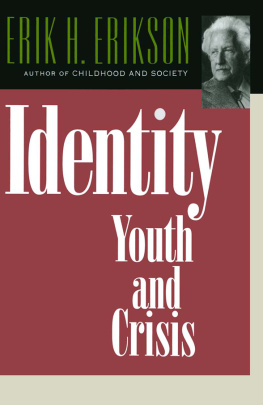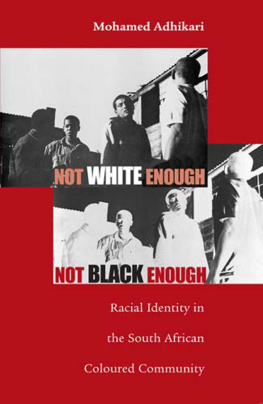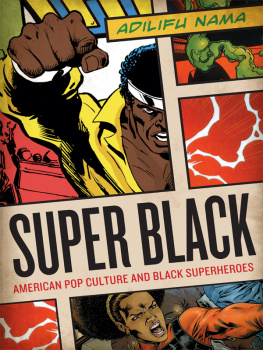My deepest gratitude goes to Curtis Stokes, Series Editor at Michigan State University Press, for his support and enthusiasm for this project. I would also like to thank Editor in Chief Julie Loehr and Elise Jajuga for their guidance in this whole process. Thanks to the anonymous manuscript reviewers for their careful responses and important intellectual interventions.
Some of the material in this book appears with the kind permission of the publishers. An earlier version of appeared in a different version as CVSpace: Musings on Cape Verdean Identity, Technology, and MySpace, in The American Communication Journal 11, no. 1 (Spring 2009); reprinted with permission.
I would also like to thank all the Cape Verdean youth throughout the Greater Boston area that took the time to sit with me and answer my questions. Although not everyone made it into the manuscript, all your comments, suggestions, and insights on race, identity, and popular culture in the United States left an indelible mark in the following pages. Muito obrigado!
And to the most beautiful person I have ever met in my life, my wife and partner, Jasmine. Thank you for your intense love and example.
EBSCOhost - printed on 2/27/2022 2:36 PM via . All use subject to https://www.ebsco.com/terms-of-use
CHAPTER ONE
Making Sense of Light-Skin African Blood: The Grammar of Cape Verdean Identity
If Im not black, then what am I?... Once you have a mix in you, youre black.
Informant
One trip to the Republic of Cape Verde, one look at its people and their phenotypic and pigmentary variation, and one becomes acutely aware of the generations of extensive intercontinental admixture. In 2010, Jorge Rocha, professor of molecular pathology and immunology at the University of Porto (Portugal), presented evidence from his study entitled Genetic Diversity in Cape Verde. Rocha argued that the Cape Verdean population is one of the most mixed in the world, with nearly 60 percent of genes coming from Africa and 40 percent from Europe. He praised the islands for their biodiversity, which, at times, is more diverse than Brazil. Rochas study, which evaluated the miscegenation levels of each island through an accounting of eye color, pigmentation (i.e., using a melanin index), and other genetic markers, was meticulous and scientifically thorough. The island of Santiago is the most African, according to Rocha (2010), with Fogo showing the highest levels of miscegenation. The point of the study was not only to illustrate the extraordinary biodiversity of the islands, but also an attempt to locate the genes that produce skin color and eye color. While I am not suggesting Rocha and others have malicious intentions, such studies do remind me of Fanons satirical prose on scientists in laboratories in search of a denigrification serum for Negroes to whiten themselves and thus throwoff the burden of that corporeal malediction (Fanon 1967, 111). Ironically, living in postracial times has meant the proliferation of genetic testing and other forms of racial scientific exploration. What I think is interesting about this science, which really only confirms what we already know, is that it does little to sublate or reduce the materiality of the black Cape Verdean position. Knowing that Cape Verdeans are genetically mixed does not make mixed-race identity any more real or race as structural position any less so.
In The Amalgamation Waltz: Race, Performance, and the Ruse of Memory, Tavia Nyongo argues that racial mixing and hybridity are neither problems for, nor solutions to, the long history of race and racism, but parts of its genealogy (2009, 174). Therefore this chapter offers a partial accounting of the history and grammar of Cape Verdean identity politics so as to provide the context from which Cape Verdean blackness is enunciated (Wilderson 2009). What becomes clear in looking into the history of Cape Verde and the making of its diaspora are the ways in which miscegenation and amalgamation are fashionably presented in the discourse concerning Cape Verdean subjectivities. That is, Cape Verdean subjectivities are presented with little indication of the ways race rules performatively or the schemes that they simultaneously underwrite (see Ehlers 2012; Sexton 2010). In other words, much of what has been said about Cape Verdean identity, both historically and sociologically, implicitly and at times explicitly revolves around ways of not being black; there are persistent attempts to explain away manifest blackness. Rhett Jones in his important, yet seldom utilized essay Mulattos, Freejacks, Cape Verdeans, Black Seminoles, and Others: Afrocentricism and Mixed-Race Persons argues with particular reference to Cape Verdeans:
So while the mixed-race people were not convinced they were not white or Indian, they were convinced they were not black. A perspective... [that] enabled them to construct a worldview which did not see their Africanity. This was no small achievement. Not one of these communities was so backward that it did not have mirrors so that each day these people could see their despised African physical features reflected back at them. Yet they managed to together construct communities of denial in which, despite the mark of oppression, they were not black. (Jones 2003, 282)
Another problem with the discourse surrounding Cape Verdean identity is that many Cape Verdean youth do not experience the world as mixed race, but as an antagonistic element of society. As a result, after discussion of Cape Verdean migration, race and cultural identity, and mixed-race theory, I offer a brief note on the black/nonblack binary and a triangulated approach to better understanding Cape Verdean youth blackness.
CAPE VERDEAN MIGRATION AND THE MAKING OF DIASPORA
As Colm Foy (1988) has described, there have been two ways to escape the drought-scourged reality of the Cape Verde Islands, death or emigration. Similar to many former colonies, Cape Verde also allows those in the diaspora to maintain dual citizenship. The diaspora, as a result, has developed long-term cultural connections with the archipelago. The transnationalism of Cape Verdeans has led to what some call the emergence of a bilateral diaspora ethnicity (Pires-Hester 1994).
In the second half of the nineteenth century, many Cape Verdeans, mainly from Brava and Fogo, immigrated to the United States to seek work in the whaling industry and packet trade. This laid the foundation for a substantial immigration to the United States at the turn of the twentieth century. Roughly 1,500 Cape Verdean migrants arrived annually on packet ships between 1860 and 1920; during those years, 26,585 Cape Verdean immigrants arrived in New England (Coli and Lobban 1990, 57).They settled mainly in New Bedford, Massachusetts. With the decline of the whaling industry and packet trade, many went to work in agriculturepicking strawberries and cranberriesand in factories, settling in Massachusetts (New Bedford, Boston, Plymouth, Taunton, Brockton, Cape Cod), Rhode Island (Pawtucket, East Providence, Central Falls), Connecticut, New York, Florida, Hawaii, and California. Nearly one-third of all Cape Verdeans arriving in the New England area between 1900 and 1920 listed Plymouth County as their intended destination (Lobban and Saucier 2007, 68). The introduction of immigration quotas in the 1920sthe Immigration Acts of 1921 and 1924derailed Cape Verdean immigration to the United States for nearly five decades. In the 1960s and early 1970s, with the demand for workers in Europe and strict immigration limitations in the United States, as outlined in the Immigration and Nationality Act of 1965, many Cape Verdeans chose to immigrate to Europe, particularly to Portugal and the Netherlands. However, even with independence in 1975, the flow of immigrants continued. Today, there exists a strong migratory flow to Portugal, Brazil, the Netherlands, Italy, France, Luxemburg, Sweden, and Germany. Others have immigrated to Angola, Senegal, and Argentina. Of all the destinations, Portugal, the Netherlands, France, and the United States are most important.

